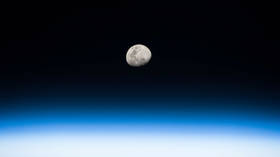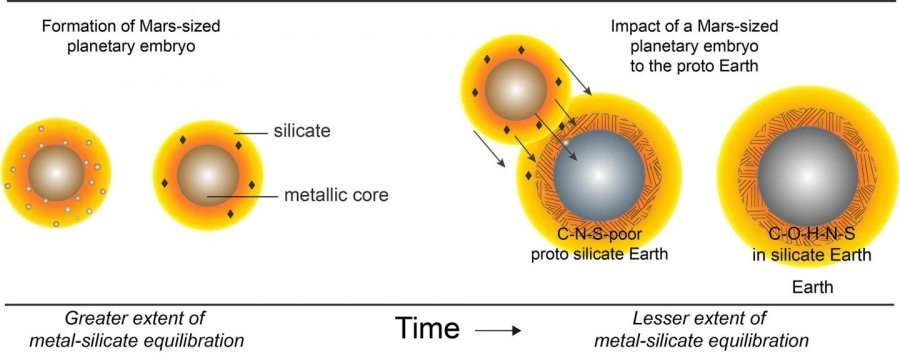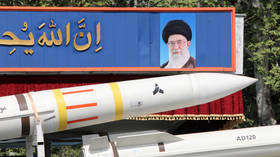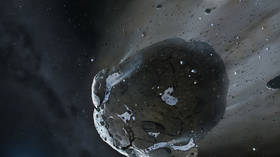Planetary collision that created Moon also seeded Earth with life-producing elements – study

The elemental building-blocks of life arrived on Earth when it collided with a “Mars-sized planet” 4.4 billion years ago – an impact that also created the Moon, a new study has found.
Carbon, nitrogen, sulfur, and other volatile elements integral to life were transferred to Earth’s outer layers through collision with a slightly smaller planet rich in these elements at the beginning of its existence. This impact produced the moon and, eventually, gave rise to carbon-based life, according to a new model of Earth’s development devised by petrologists at Rice University.
Also on rt.com Lucky strike? Moment meteorite slammed into Super Blood Wolf Moon caught on camera (PHOTO, VIDEO)In a collision with Earth, the volatile materials could transfer from the Mars-sized planet to Earth’s surface, but wouldn’t permeate to its core, which does not interact with its outer layers. This model solves a mystery that has puzzled geologists for decades regarding why these vital elements exist in all layers of Earth except its molten core.
“The core doesn't interact with the rest of Earth, but everything above it, the mantle, the crust, the hydrosphere and the atmosphere, are all connected,” explained Damanveer Grewal, lead author of the study, which was published in Science Advances. “Material cycles between them.”

The collision theory resembles existing models in which a meteorite is responsible for seeding the volatile elements on Earth. Unfortunately, the carbon to nitrogen ratio in such meteorites (called carbonaceous chondrites) is much lower than the ratio found in Earth’s non-core material. Additionally, the collision theory explains why the moon and Earth have the same elemental composition – they were once part of the same sphere.
“Ours is the first scenario that can explain the timing and delivery in a way that is consistent with all of the geochemical evidence,” said Rajdeep Dasgupta, co-author of the study.
Also on rt.com Moon mining: ESA sets up lunar project to secure oxygen & water by 2025“The study suggests that a rocky, Earth-like planet gets more chances to acquire life-essential elements if it forms and grows from giant impacts with planets that have sampled different building blocks, perhaps from different parts of a protoplanetary disk,” he added, noting that while it was unlikely the complexity of Earth’s biosphere and atmosphere could have arisen through a single impact, the volatile-transfer model leaves the door open to further impacts – and further elemental seeding.
Like this story? Share it with a friend!













